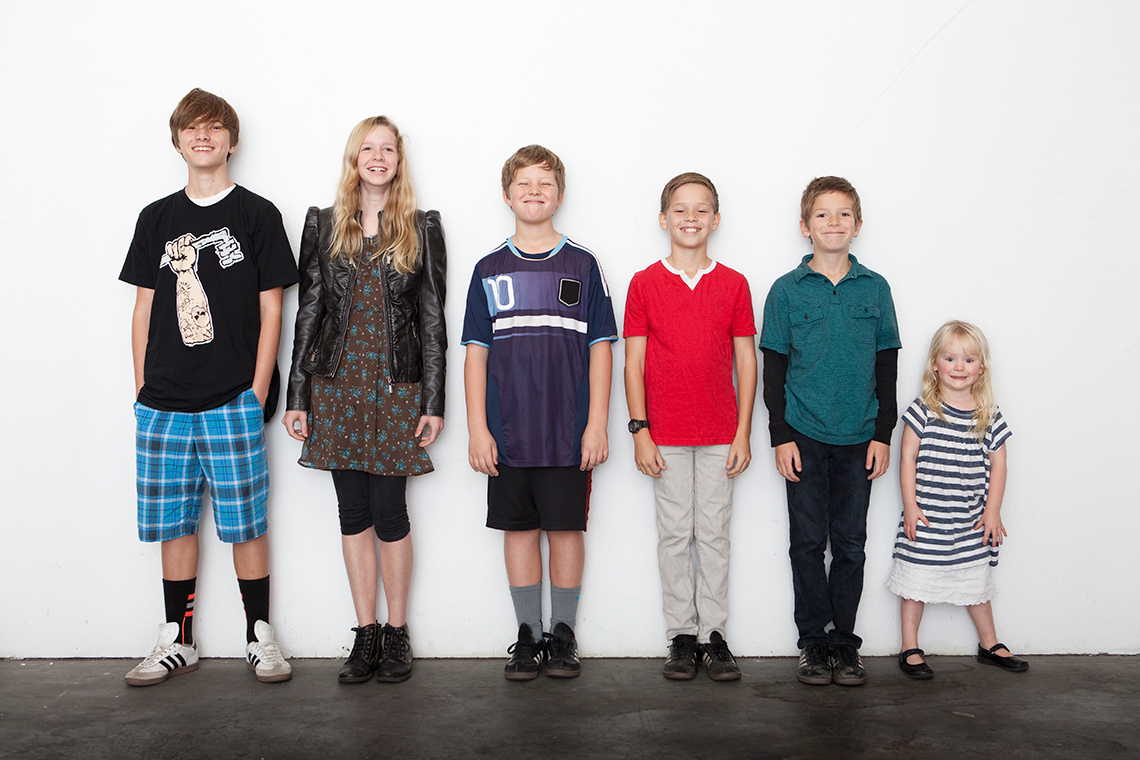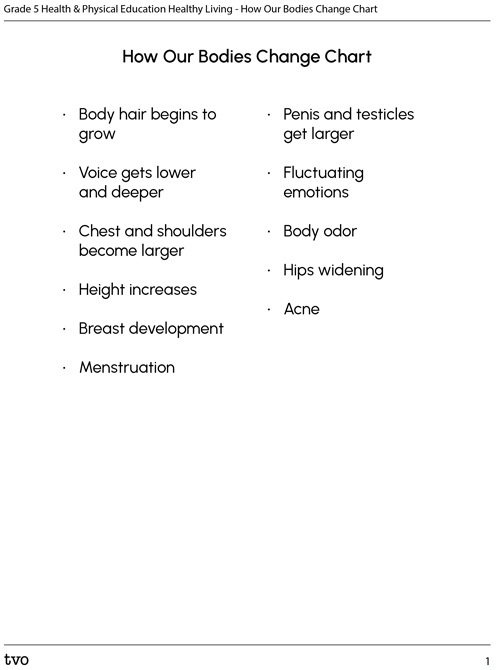Minds On
What is puberty?
Puberty is the process of physical changes through which a child’s body matures into an adult body capable of sexual reproduction. Puberty is a normal part of growing up and maturing.

Puberty generally begins somewhere between 8 years old and 16 years old. Everyone will experience growth and development of their body during puberty at different times.
While going through puberty, there are changes that happen physically to the body and social/emotional changes.
It all begins in the brain
Puberty begins in the brain. There is a part of the brain called the pituitary gland. The pituitary gland is important in controlling growth and development.

The pituitary gland is a small, bean-shaped gland at the base of your brain, generally located between your ears and behind your nose.
It sends chemical messages (hormones) to different parts of the body to start changing. Some of these changes are experienced by people with a male reproductive system only, some by people with female reproductive system only, and some are experienced by both.
Some changes that happen during puberty are noticeable, others are not.
Changes to ourselves
Some changes could include:
- a desire for greater independence
- a desire for acceptance by friends, wanting to fit in
- feeling like being on an “emotional rollercoaster” — happy and positive one minute, then sad and negative the next
- some people may begin to have a romantic interest in someone
Consider the following questions:
- How old are people when puberty starts?
- Where does puberty begin?
- What are some examples of social/emotional changes during puberty?
Record your responses using any method of your choice.
Action
What happens during puberty?
There are many physical and emotional changes that take place to the human body during puberty. While some changes will be experienced by both people with a male reproductive system and people with a female reproductive system, other changes apply only to one or the other.
During puberty, some body parts mature and develop. These changes occur within the reproductive system.
Press ‘Description’ to explore a definition of the reproductive system.
For people with female reproductive systems, these parts include the vagina, cervix, uterus, ovaries, fallopian tubes, endometrium, and clitoris.

The female reproductive system
The female reproductive system. There are arrows pointing to various parts of the reproductive system. Clockwise, these are: uterine lining, uterus, vagina, ovary, and fallopian tube.
People with female reproductive systems may also develop breasts, notice widening of the hips, and menstruation happens for the first time. An increase in weight and an increase in body fat sometimes occurs and is normal. The hormone that causes these changes is called estrogen.
Press ‘Description’ to explore a definition of menstruation.
Menstruation is the medical term for having a ‘period’ and is the monthly flow of blood from the uterus. Menstruation does not begin at the same age for all people with female reproductive systems. Generally, every month, an egg leaves one of the ovaries and travels down one of the fallopian tubes towards the uterus.
For people with male reproductive systems, the parts that develop include the penis, scrotum, testicles, urethra, prostate gland, seminal vesicles, and vas deferens.

The male reproductive system. There are arrows pointing to various parts of the reproductive system. Clockwise, these are: Vans deferens, testicle, urethra, penis, and prostate gland.
People with male reproductive systems also may become more muscular and their chest and shoulders may become larger, get deeper voices, grow facial and body hair, and their penis and testicles may grow larger. The hormone that causes these changes is called testosterone.
Press ‘Description’ to explore a definition of testicles.
What happens during puberty?
At puberty, nearly all people experience some growth of hair under the arms, on the legs, and on the pubic area, while the amount, colour, and texture of hair varies from person to person. During this time, height increases, and one may experience a growth spurt, which is an intense period of growth. Acne may also be noticeable, along with increased body odour due to hormonal changes.

Not all bodies experience changes of the same kind, or at the same time.
Sort the following possible changes into the most appropriate category: “Experienced by people with male reproductive systems,” “Experienced by people with female reproductive systems," or “Possibly experienced by both.”
- Body hair begins to grow
- Voice gets lower and deeper
- Chest and shoulders become larger
- Height increases
- Breast development
- Menstruation
- Penis and testicles get larger
- Fluctuating emotions
- Body odour
- Hips widening
- Acne
Complete the How Our Bodies Change Chart in your notebook or using the following fillable and printable document. If you would like, you can use speech-to-text or audio recording tools to record your thoughts.
Press ‘Answers’ to check your work.
| Experienced by People with Male Reproductive Systems | Experienced by People with Female Reproductive Systems | Possibly Experienced by Both |
|---|---|---|
|
|
|
Pause and Reflect
Pause and reflect
What are some physical changes that may happen during puberty?
Record your answers using any method of your choice.
Consolidation
Bringing it all together
Reflect on what you have learned by completing the following multiple-choice questions.
Select the correct answer, then press ‘Check Answer’ to see how you did.
True and false
Reflect on some statements about puberty and choose if they are either true or false.
Select the correct answer, then press ‘Check Answer’ to see how you did.
Reflection
As you read through these descriptions, which sentence best describes how you are feeling about your understanding of this learning activity? Press the button that is beside this sentence.
I feel…
Now, record your ideas using a voice recorder, speech-to-text, or writing tool.
